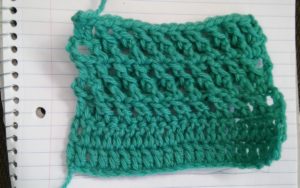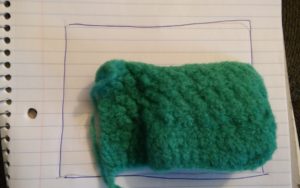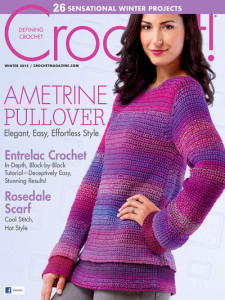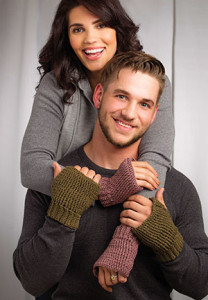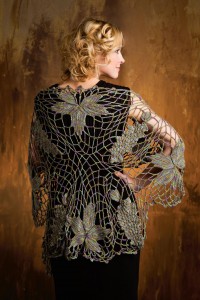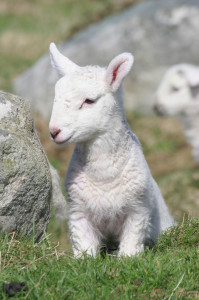 I have a new found appreciation for the work any small independent yarn company or dyer does. This last weekend I had the opportunity to experience the New York Sheep & Wool Show, at the Duchess County Fairground in Rhinebeck, NY by working in the booth of Lisa Souza Dyeworks.
I have a new found appreciation for the work any small independent yarn company or dyer does. This last weekend I had the opportunity to experience the New York Sheep & Wool Show, at the Duchess County Fairground in Rhinebeck, NY by working in the booth of Lisa Souza Dyeworks.
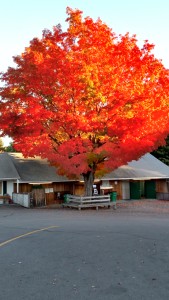
Beautiful colors at the NY Sheep & Wool Show at the Duchess County fairground, Rhinebeck, NY
As many can image, these small businesses have yarn specially milled, some do custom dyeing to bring beautiful and unique colors, some work with specialty fibers to bring us unique and soft yarns. We can easily imagine the obvious parts of the business, like putting the color on the yarns, of raising the animals to shear or comb for fibers, but the true essence behind what it takes for them to stay in business is something that we can easily overlook.
I have worked this booth in the past at different venues, but this is the first time I have been there from set-up to take down. Usually I assist people looking for various yarns, I answer questions, and help replace stock, however this time in addition to the meet with the customers, I helped set the product on the walls, getting everything in place for its first customers and then helped put everything into the moving truck the moment the show ends on Sunday.
Now I have heard the stories of the Rhinebeck show. This is its 35 year of operation, and it has quite a reputation. It is a full fiber show that invites the whole family. There are a variety of sheep breeds, as well as shearing demonstrations, spinning competitions, weaving demonstrations, interesting food vendors, many vendors featuring fiber related goods, book signings and all round simple wholesome good times. This show receives a large number of people over just two days, I have heard figures average about 60,000 people over the weekend, I can say it does feel like that many.
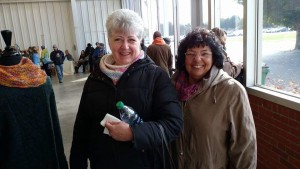
Nancy & Deb have no problem eating lunch at a picnic table in snow flurries. Definitely giving me memories.
After working on the floor over the events two days, I can say I was completely exhausted. I met many people, made some new friends and spent some time with long time ones, (such as Margaret Hubert, Jessie Rayot, Shari White, Nancy Smith, Andrea Giattini, and Deb Seda, even if a couple of them thought it was warm enough to share lunch on the picnic bench while there were snow flurries, I may not have mentioned that it was cold during the event…temperatures somewhere in the 30’s (F) on Sunday). I even met Katy Clement who had a video of my competition with Lily Chin at the 2014 CGOA Chain Link Conference (Knit & Crochet Show) in Concord, NC (at the Fun Night, I had beat everyone else in the room at speed crocheting, and then got to face off against Lily Chin for the title…yes, I lost, but Lily is really fast). She shared the video with me and I am happy to share it with you here (IMG_3743).
Then after the show closed the real work began, the entire product, all the display needed to come down, be boxed up and placed in the moving truck. So after being on your feet for 10-12 straight hours the last 3 consecutive days, after traveling over 3000 miles, you then need to make a final push and make it all go away. It was physically draining (I am sure I lost some weight), I used muscles that I forgot I had. Then you realize, every show is like this. There is nothing overly special for vendors at this show (except that the amount of people can generate into more sales), but these small independent yarn companies do this multiple time a year, some more than once a month to get their yarn into your hands. I met one vendor that will have done 18 shows this year; I didn’t even ask how many miles they have traveled.
It is not an easy job that they undertake, a job that is a passion about yarn. I appreciate what they go through to keep a viable business, and keep a great product available for me to work with. My hats off to them and all small businesses that go extra miles that most of us just take for granted.
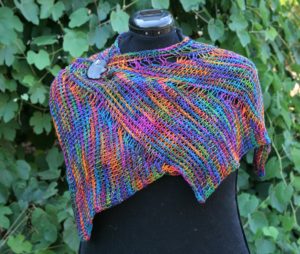 I contributed the patterns, both crochet and knit (Brenda Atchison helped a lot with the knit version), for this cute one skein shawl. Lickin Flames added an adorable Shawl Pin, this little black sheep, which works wonders at pinning a shawl while making everyone smile. Mountain Colors contributed the yarn, a skein of Twizzlefoot (a great blend of Superwash Merino and Domestic Wool with silk and nylon), a great sock weight yarn.
I contributed the patterns, both crochet and knit (Brenda Atchison helped a lot with the knit version), for this cute one skein shawl. Lickin Flames added an adorable Shawl Pin, this little black sheep, which works wonders at pinning a shawl while making everyone smile. Mountain Colors contributed the yarn, a skein of Twizzlefoot (a great blend of Superwash Merino and Domestic Wool with silk and nylon), a great sock weight yarn.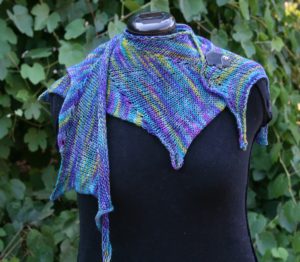 We released this kit last month exclusively on the wholesale market, getting it in the hands of shop owners, so that anyone needing a holiday gift would find the perfect kit for their loved one…either the knitter or crocheter.
We released this kit last month exclusively on the wholesale market, getting it in the hands of shop owners, so that anyone needing a holiday gift would find the perfect kit for their loved one…either the knitter or crocheter.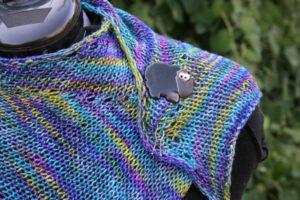 I have never had something put together in such a way as to allow everyone contributing really shine. It was fun to work on the collaboration, and I hope we can pull off another one in the future. If you are looking for a perfect Christmas gift for your yarn lover, or just looking a gift for yourself, please consider checking out the Cooperation Shawl.
I have never had something put together in such a way as to allow everyone contributing really shine. It was fun to work on the collaboration, and I hope we can pull off another one in the future. If you are looking for a perfect Christmas gift for your yarn lover, or just looking a gift for yourself, please consider checking out the Cooperation Shawl.

